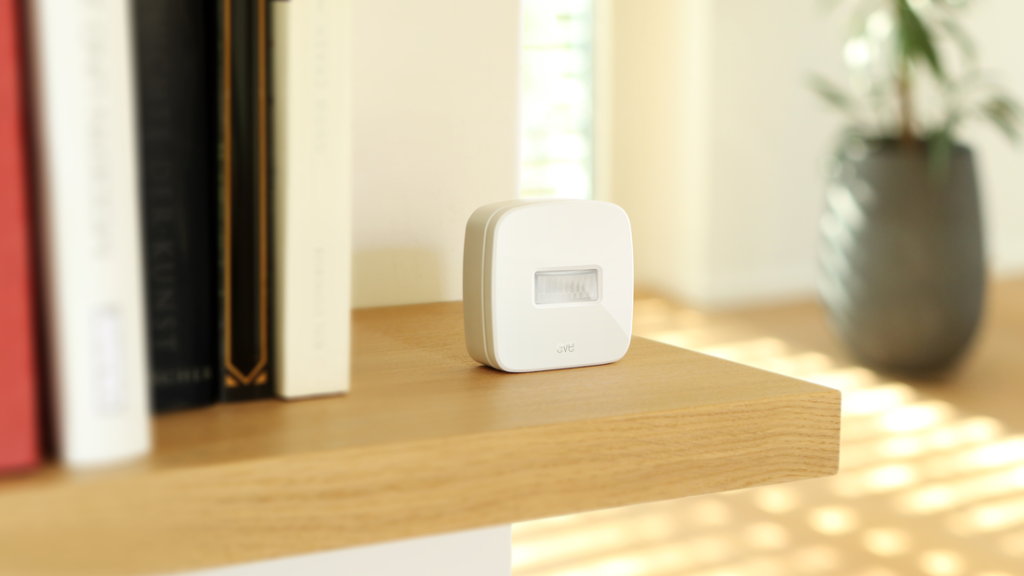I have to assume that in 2019, we’re all pretty familiar with outdoor flood lights that have built-in motion detection that is aimed at providing safety and security in dimly lit areas of the exterior of your home and for the most part, these devices work great. However, we maybe aren’t so accustomed to motion detection inside the home and with good reason as this presents a number of challenges from range to direction and getting these just right can be a bit of a headache, but when done properly, indoor motion sensors can not only be a convenience in terms of illuminating the space, but with a little bit of home automation magic, we can really make a space come alive. In this article, we dive into the Eve Motion motion sensor and hopefully give you a better idea of its utility to help you make a more informed buying decision.
Features
- Trigger accessory actions or scenes based on detected moevemtn
- Notifications via Apple’s Home app
- IPX3 Water Resistance
- Adjust sensitivity

Need to Knows
- HomeKit exclusive – Home hub required for remote notifications and automations
- 120 degree field of view and 9 meter range
- Connects via Bluetooth Low Energy
- Requires 2 AA batteries and will last approximately one year
Pros

One of the big debates in the home automation world is to hub or not to hub. A benefit of hubs is that they often use wireless protocols that tend to be much faster and more reliable compared to standards such as WiFi or Bluetooth. One of the advantages of not having a hub is that you don’t have the added cost of a hub which comes in handy if you are looking to piecemeal your connected home. Since the Eve Motion connects via Bluetooth Low Energy, it doesn’t require a hub to connect to HomeKit, but rather it connects directly to your iOS device or a Home hub. Another benefit of this is you can still get notifications if there is a power outage, although you’ll need to be in range of the sensor since if the power is down, none of your Home hubs will be functioning.
I’ve owned the Eve Motion for more than two years and it has mostly lived inside triggering scenes and lights in various rooms throughout the inside of my home. However, Eve Motion boasts an IPX3 rating. Essentially this means that Eve Motion has not been specifically rated for intrusion protection, but is rated for “protection against water droplets deflected up to 15° from vertical”. This means that until the Phillips Hue outdoor motion sensor was released a few months ago, Eve Motion was the only HomeKit-compatible motion sensor available. By the way, if you want to read up on IP ratings, I included the link where I pulled the above IP rating definitions from in the Links & Resources section at the bottom of this post.
Cons

While the design of Eve Motion does fall in line with its first wave of HomeKit accessories borrowing from the early 2000s white plastic MacBook aesthetic and though I don’t mind the other devices that share this styling, the combination of the size of the Eve Motion and its sensor window really turn me off; enough to the extent that it has been relegated to the pantry to reside in darkness. Perhaps due to it being one of the first HomeKit products on the market, or maybe it was intended as an outdoor motion sensor all along but in my opinion, it really is an eyesore. However, it’s not only because of my distaste for its appearance that it occupies a rarely visited corner of my home…
Maybe not-so-surprisingly, there are not many options for motion sensors in the HomeKit world and even fewer if you are rolling sans-hub and there is one thing that stands out when comparing Eve Motion with its HomeKit cohorts: the lack of an ambient light sensor. Perhaps I was spoiled by the flexibility that an ambient light sensor brings to a motion sensor, but even if you aren’t triggering lights with this accessory, a lux sensor is essential for being able to create really useful automations.
Again, this may be because I have been spoiled by the snappy response of Zigbee devices, but Eve Motion can take a little longer than I would like to respond to movement. Regardless of the sensitivity set in the app, there is noticeable latency. Furthermore, the device has difficulties recognizing and responding to motion after the initial detection which inevitably means that if you use this accessory to trigger lights, you are likely to be left in the dark after your selected time out is up. Very frustrating.
The App

I’ve long praised the Eve for HomeKit app for being the most powerful, well-organized, and free HomeKit app out there and will continue to stand by this until it is dethroned. It easily allows us to add multiple triggers with multiple conditions to put scenes into motion and it is a must-have for any HomeKit enthusiast.
In terms of the Eve Motion’s functionality within the app, we have some quite useful, if not standard at least for Eve, metrics regarding when motion has been detected. Motion events are presented in both table and graph forms and can be exported if we so choose. In terms of settings we can adjust for the sensor itself, it’s fairly limited. We can configure the sensitivity of the sensor between low, medium, and high meaning that a low sensitivity will require more movement in order fo the sensor to be triggered. We can also adjust the “Duration” of the sensor’s countdown essentially meaning that you can create a rule that specifies to turn off a scene once this duration has been reached. Finally, we can toggle the LED indicator on the face of the device to flash once motion is detected.
I’ll be frank, I would not buy the Eve Motion again. The absence of an ambient light sensor really limits its functionality and its connectivity issues are simply too much when compared to its competition. I could even overlook its undesirable design if it weren’t so limiting in its functionality and reliability. Undoubtedly, Eve is aware of the shortcomings of this device as it is a smudge in an otherwise extraordinary lineup of connected home products and I’m assuming that they are working to remedy its flaws.
Do you prefer motion sensors or switches for light control of a room? What unique ways have you masterminded to use motion sensors? If you let us know in the comments, we’ll promise to keep it to ourselves. Don’t forget to follow us on YouTube, Facebook, Instagram, Twitter, Friendster, Bolt, ICQ, AIM and of course, Myspace @myhomekithome.
Links & Resources
Learn more about all of Eve Systems’ HomeKit-compatible smart home products at http://www.evehome.com
Learn about IP ratings at http://www.enclosurecompany.com/ip-ratings-explained.php
We use income-earning affiliate links.
We may receive a small commission on purchases made using links on this page at no extra cost to you.

